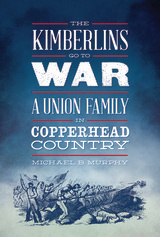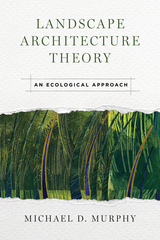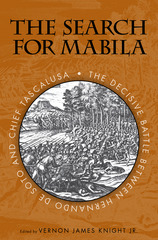4 books by Murphy, Michael

Carex of Illinois and Surrounding States
The Oval Sedges
Michael Murphy, Greg Spyreas, and Paul Marcum
University of Illinois Press, 2024
A common group of plants in the Midwest’s natural areas, the oval sedges supply food for wildlife while their roots bind the soil and their vegetation creates habitat. Carex of Illinois and Surrounding States: The Oval Sedges offers a guide to the identification, distribution, and natural history of this diverse group of plants. Focused on the Carex section Cyperoideae, the editors cover Illinois’ twenty-five species, every oval sedge in Indiana and Kentucky, and nearly every species in Iowa, Michigan, Missouri, and Wisconsin. A two-step process helps users recognize the notoriously difficult-to-identify plants while illustrations and labeled photographs aid users in evaluating morphological characteristics. The editors also furnish first-ever distribution maps for Illinois’ recently described species and varieties plus up-to-date maps for nearly every other species.
Drawing on the study of thousands of specimens, Carex of Illinois and Surrounding States: The Oval Sedges is an invaluable resource for botanists, ecologists, environmental engineers, and professional and amateur environmentalists interested in a deeper understanding of these essential plants.
[more]

The Kimberlins Go to War
A Union Family in Copperhead Country
Michael B. Murphy
Indiana Historical Society Press, 2016
As July 7, 1861, dawned, war was in the air in Lexington, Indiana. The county seat of Scott County was abuzz with the latest news of the southern rebellion. The _Madison Daily and Evening Courier_ told of skirmishes between Federal troops and “secesh” forces at Harpers Ferry and Falling Waters, Virginia. Closer to home, word had come that William A. Sanderson had organized a new outfit, the Twenty-Third Indiana, and was recruiting throughout the Second Congressional District for men to join the regiment.
Although Scott County had been rife with sympathy and support for the South, answering the call to serve the Union cause from the county were Jacob T. Kimberlin, a twenty-one-year-old farmhand; his older brother, John J.; and his cousins, William H. H. Kimberlin, Benjamin F. Kimberlin, and James Stark. These five young men could not have known at the time that none of them would ever again see their homes. They only knew that the Kimberlins were going to war.
This is the story of the Kimberlin family that sent thirty-three fathers and sons, brothers and cousins, to fight for the Union during the Civil War. Ten family members were killed, wounded, or died of battlefield disease, a 30 percent casualty rate that is unmatched in recorded Scott County history. Of the 134 known deaths of Scott County soldiers, ten were members of the Kimberlin clan. Their feelings about the war come from forty letters to and from the battlefield that have survived to this day. The book examines such questions as: Were they fighting to save the Union or to free the slaves? How did they express grief over the loss of a brother? Did they keep up with their business and the women at home? And what did they think about “secesh” neighbors in southern Indiana who tried to undermine the Union?
[more]

Landscape Architecture Theory
An Ecological Approach
Michael D. Murphy
Island Press, 2016
For decades, landscape architecture was driven solely by artistic sensibilities. But in these times of global change, the opportunity to reshape the world comes with a responsibility to consider how it can be resilient, fostering health and vitality for humans and nature. Landscape Architecture Theory re-examines the fundamentals of the field, offering a new approach to landscape design.
Drawing on his extensive career in teaching and practice, Michael Murphy begins with an examination of influences on landscape architecture: social context, contemporary values, and the practicalities of working as a professional landscape architect. He then delves into systems and procedural theory, while making connections to ecosystem factors, human factors, utility, aesthetics, and the design process. He concludes by showing how a strong theoretical understanding can be applied to practical, every-day decision making and design work to create more holistic, sustainable, and creative landscapes.
Students will take away a foundational understanding of the underpinnings of landscape architecture theory, as well as how it can be applied to real-world designs; working professionals will find stimulating insights to infuse their projects with a greater sense of purpose.
Drawing on his extensive career in teaching and practice, Michael Murphy begins with an examination of influences on landscape architecture: social context, contemporary values, and the practicalities of working as a professional landscape architect. He then delves into systems and procedural theory, while making connections to ecosystem factors, human factors, utility, aesthetics, and the design process. He concludes by showing how a strong theoretical understanding can be applied to practical, every-day decision making and design work to create more holistic, sustainable, and creative landscapes.
Students will take away a foundational understanding of the underpinnings of landscape architecture theory, as well as how it can be applied to real-world designs; working professionals will find stimulating insights to infuse their projects with a greater sense of purpose.
[more]

The Search for Mabila
The Decisive Battle between Hernando de Soto and Chief Tascalusa
Edited by Vernon James Knight Jr.
University of Alabama Press, 2009
One of the most profound events in sixteenth-century North America was a ferocious battle between the Spanish army of Hernando de Soto and a larger force of Indian warriors under the leadership of a feared chieftain named Tascalusa. The site of this battle was a small fortified border town within an Indian province known as Mabila. Although the Indians were defeated, the battle was a decisive blow to Spanish plans for the conquest and settlement of what is now the southeastern United States. For in that battle, De Soto’s army lost its baggage, including all proofs of the richness of the land—proofs that would be necessary to attract future colonists. Facing such a severe setback, De Soto led his army once more into the interior of the continent, where he was not to survive. The ragtag remnants of his once-mighty expedition limped into Mexico some three years later, thankful to be alive. The clear message of their ordeal was that this new land, then known as La Florida, could not be easily subjugated.
But where, exactly, did this decisive battle of Mabila take place? The accounts left by the Spanish chroniclers provide clues, but they are vague, so lacking in corroboration that without additional supporting evidence, it is impossible to trace De Soto’s trail on a modern map with any degree of certainty. Within this volume, 17 scholars—specialists in history, folklore, geography, geology, and archaeology—provide a new and encouragingly fresh perspective on the current status of the search for Mabila. Although there is a widespread consensus that the event took place in the southern part of what is now Alabama, the truth is that to this day, nobody knows where Mabila is—neither the contributors to this volume, nor any of the historians and archaeologists, amateur and professional, who have long sought it. One can rightfully say that the lost battle site of Mabila is the predominant historical mystery of the Deep South.
[more]
READERS
Browse our collection.
PUBLISHERS
See BiblioVault's publisher services.
STUDENT SERVICES
Files for college accessibility offices.
UChicago Accessibility Resources
home | accessibility | search | about | contact us
BiblioVault ® 2001 - 2024
The University of Chicago Press









